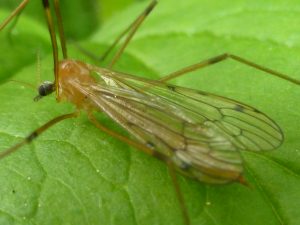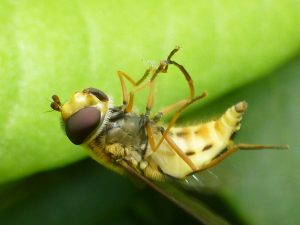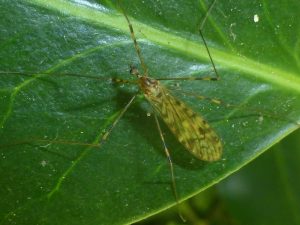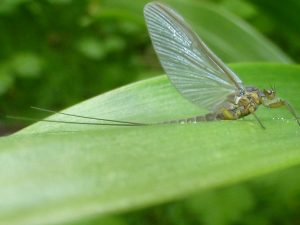May 2014 was rather warm but also rather dull for much of the time, at least weather-wise. However it was anything but dull in terms of the wildlife recorded in the Garden at Edinburgh! No fewer than seventeen species were added to the Inverleith wildlife list, bringing it up to 673.
Birds – One of the most unexpected of the 17 species added to our list in May was a Cuckoo heard by three horticultural staff on 10th, about half an hour before the Garden opened to the public. Although Cuckoos are found in the surrounding countryside of the Pentland Hills and East Lothian they are extremely rare visitors to Edinburgh itself, especially so close to the city centre. Once again, for the third month in a row, the number of bird species recorded in the month was static at 37. Apart from the Cuckoo, the month’s highlights were a Garden Warbler on 8th during the staff’s early morning bird walk led by Cathy Bell, and a Green Woodpecker calling on 8th. The first Garden records for 2014 of both Swallow and Swift were also on 8th. Moorhen and Mallard on the Pond hatched broods of four chicks and five ducklings respectively but sadly most of these seem to have fallen prey to the ever-watchful Grey Heron that spends a lot of time in the yew bushes at the north side of the Pond keeping an eye on what’s going on. There were reports of three and two Tawny Owl chicks in different parts of the Garden and the owls were regularly using one of the two owl boxes, although there was no evidence that the owlets had actually been hatched in it. The full list of bird species recorded at the Edinburgh Garden in May was: Blackbird, Blackcap, Blue Tit, Bullfinch, Carrion Crow, Chaffinch, Chiffchaff, Coal Tit, Cuckoo, Dunnock, Feral Pigeon, Garden Warbler, Goldcrest, Goldfinch, Great Spotted Woodpecker, Great Tit, Green Woodpecker, Greenfinch, Grey Heron, Herring Gull, Lesser Black-backed Gull, Long-tailed Tit, Magpie, Mallard, Mistle Thrush, Moorhen, Robin, Siskin, Song Thrush, Sparrowhawk, Stock Dove, Swallow, Swift, Tawny Owl, Tree Creeper, Wood Pigeon and Wren.
Insects – Four butterfly species were recorded during May. There was welcome confirmation that RBGE’s colony of Holly Blues, one of the few in Scotland is still extant, as they were seen on 14th and 15th. Some years there is a second brood in late summer/autumn. Other species were Orange Tip, Green-veined White and lots of Small Whites. Moth trapping has begun regularly in the Garden this year by a team of volunteers from the DESS unit of the Scottish Wildlife Trust. As can be seen from the blog post of 21 May put up by Max Coleman this has already yielded good results with seven moth species being added to the Garden’s list since trapping began in March. All six of the common garden bumblebee species were seen during the month, as well as Forest Cuckoo Bee, three species of solitary bee and the sawfly Athalia cordata which has a close association with Bugle (Ajuga reptans). A newly emerged Common Hawker dragonfly was seen at the Scottish Heath Garden pond on 30th. Eleven different species of hoverfly were seen although most were recorded only one day each – the most frequently recorded species were two different species of Banded Hoverfly (Syrphus). Like last year (if not worse), it was a very poor year for St Mark’s Flies (Bibio marci) with very few being seen, in contrast to the hordes present in 2011 and 2012.
Three species of crane-fly were added to the Garden’s list: two species of Limonia, L. phragmitidis and L. nubeculosa, on consecutive days (8th and 9th respectively) and Spotted Cranefly Nephrotoma appendiculata on 27th. The two Limonia species both have attractively patterned wings. A mayfly species, the Large Dark Olive (Baetis rhodani) was another new addition to the Garden’s list (15th).
It’s been a good spring for shield bugs with lots of Hawthorn Shield-bug being seen as well as Forest (Red-legged) Shield-bug and, late in the month, Birch Shield-bug. A fourth species, Parent Bug (12th) was a new addition to the Garden’s list. ‘Cuckoo spit’ formed by Common Froghopper was seen on plant stems from 20th. Three ladybird species were recorded: Pine (9th and 13th), 7-spot (9th, 15th, 16th) and Cream-spot (29th). Five beetle species were added to the Garden’s list in May, including a leaf beetle on poplar, a ground beetle, a leaf weevil, the Whirligig Beetle (seen on the surface of the pond in the Scottish Heath Garden) and the Pea and Bean Weevil for which it has been a good or bad year depending on one’s point of view and which must have been present but unrecorded in past years.
Since most trees and plants were still coming into leaf there was little evidence of leaf-miners, with only three species being recorded – one on holly, one on dock and the third on spinach in the Teaching Garden. All of these were caused by flies. Galls formed by five different species of gall mite were also observed, on lime (three species), alder and white-beam. The Eriophyes tiliae nail galls appeared much earlier than usual – the lime leaves had hardly expanded when the first galls were seen.




